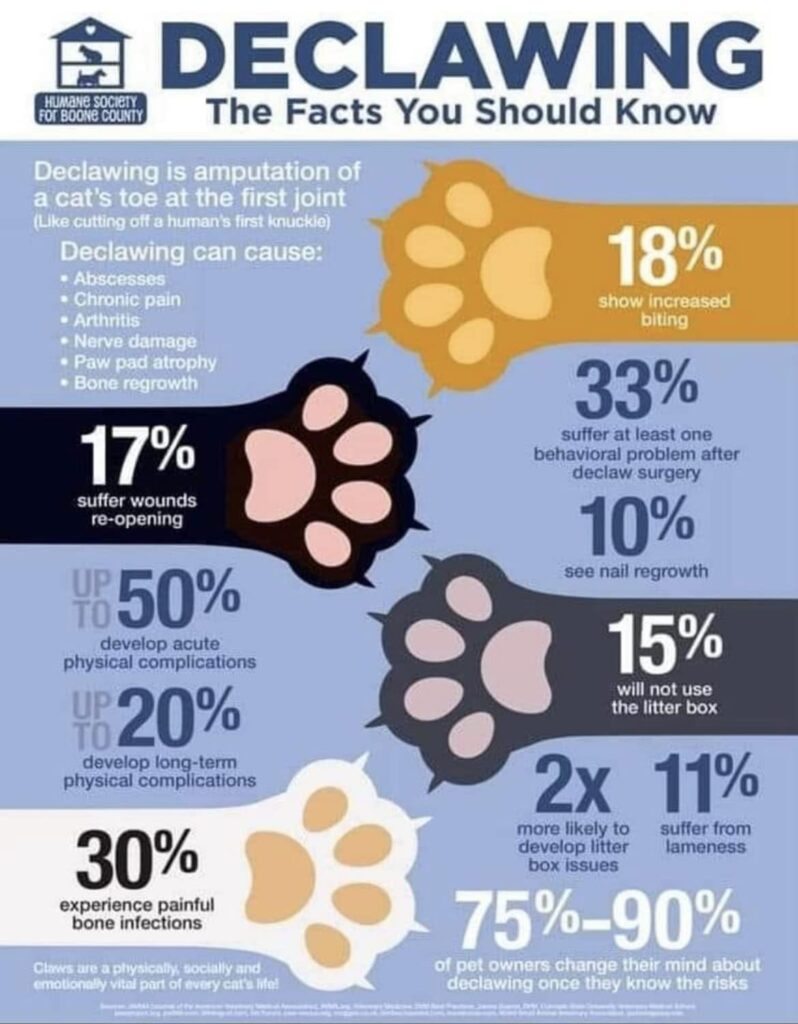What you need to know about declawing a cat?
Declawing can cause paw pain, back pain, infection, tissue necrosis (tissue death) and lameness. Removing claws changes the way a cat’s foot meets the ground and can cause pain like wearing an uncomfortable pair of shoes. Improperly removed claws can regrow, causing nerve damage and bone spurs.
What do vets think about declawing cats?
AVMA discourages declawing as an elective procedure and supports non-surgical alternatives. Declawing is a major surgery involving amputation and is not medically necessary for the cat in most cases.
What are the horrors of declawing a cat?
Due to their stoic and subtle nature, pain can be difficult to decipher in cats. And so the true long-term physical effects of declawing cats are still being studied, but they include nerve damage, bone spurs, improper regrowth of claws, lameness, and back pain.
Are declawed cats always in pain?
Right after being declawed, the cat will be in pain. Vets will prescribe medicine to help manage the immediate pain. There may also be bleeding, swelling and infection. One study found that 42% of declawed cats had ongoing long-term pain and about a quarter of declawed cats limped.
Do cats get sad when you declaw them?
Cats that have been declawed often suffer from prolonged, long-term anxiety, stress, depression, are more fear, have no ability to protect themselves, and sometimes are more prone to biting if scared, as their first line of defense–their claws–have been removed.
Is it animal abuse to declaw a cat?
Declawing is very common in North America and it is done for a human’s convenience without regard for their animal. Declawing is illegal in many European countries and is considered an act of animal cruelty.
What states is it illegal to declaw a cat?
In the United States, declawing is outlawed in Austin, Texas; Denver, Colorado; the City of St. Louis and St. Louis County, Missouri; Pittsburgh and Allentown, Pennsylvania; and Madison, Wisconsin.

